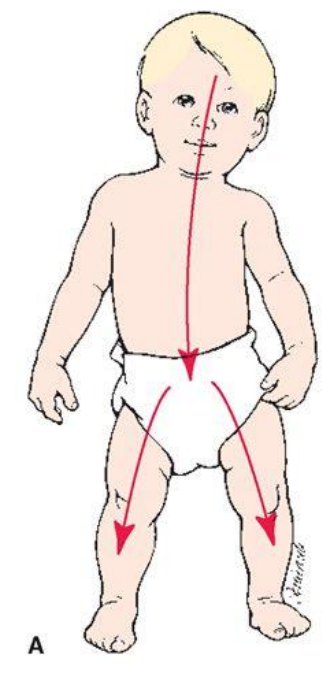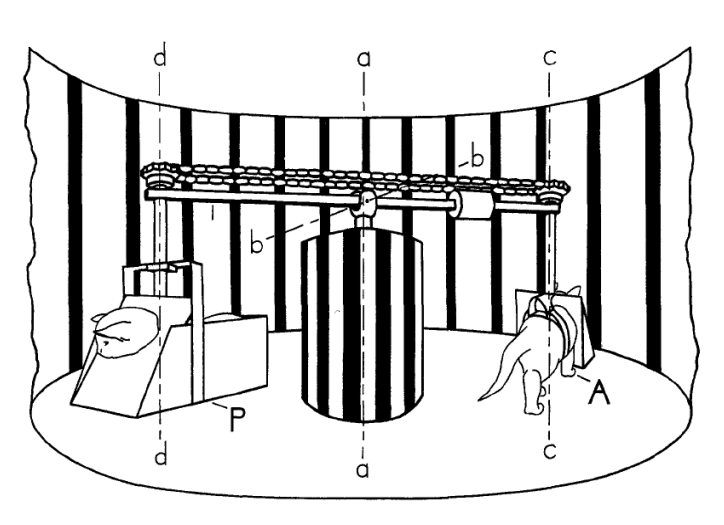Development 2: Perceptual and motor development
1/17
There's no tags or description
Looks like no tags are added yet.
Name | Mastery | Learn | Test | Matching | Spaced |
|---|
No study sessions yet.
18 Terms
What is perceptual development?
The development of sensory abilities such as seeing, hearing, and touching.
What is perceptual narrowing?
The process where babies become more sensitive to frequently occurring stimuli and less sensitive to stimuli they rarely encounter.
Brain needs to make sense of all the information it’s receiving → what is important and relevant to attend to? → tracking things that reoccur
How is perceptual narrowing related to brain plasticity?
The brain adapts to relevant stimuli while ignoring less relevant ones, helping with efficiency in processing sensory information.
Brain plasticity is high when young
What preference do newborns show for faces?
Newborns prefer looking at face-like stimuli over non-face stimuli.
E.g., Study: newborn baby is put in a lab and shown different paddles (tracking eyes and head) → substantially higher tracking when paddle has face-like features
What is the own-species effect?
Young babies (<6 months) can distinguish between human and non-human faces, but older infants (>9 months) lose this ability for non-human faces.
This is because we don’t spend that much time looking at non-human faces so we lose the ability to tell the difference while becoming better at distinguishing human faces
What is the own-race effect?
Young babies can distinguish faces of all ethnicities, but older infants lose sensitivity to ethnicities they do not frequently encounter.
E.g., Vancouver babies see more ethnicities and are less prone to this effect
What preferences do babies show for speech?
They prefer real human speech, the language they heard in the womb, and their mother’s voice over other women's voices.
What is infant-directed speech (IDS)?
The exaggerated, high-pitched, slow speech pattern ("baby talk") that helps infants learn language.
How does perceptual narrowing affect speech perception?
Babies initially recognize all phonemes (be capable of learning all languages) but lose the ability to differentiate sounds that are not in their native language by 9 months. → become better at noticing differences in phonemes present in their language(s) but becoming worse at differentiating between phonemes in different languages
languages differ in sounds used → we don’t perceive sound differences in sounds that aren’t used in our languages
What is a sensitive period?
A time when exposure to specific experiences has the greatest impact on development.
Examples:
imprinting: baby birds believe the first moving stimulus they see is their mother
Accents: we will have accents if we try to learn additional languages past age 12 → lose brain plasticity to hear differences
Cataracts: face processing effects remain if cured after 6 months
What is the cephalocaudal rule?
Growth and motor control develop from head to feet (e.g., babies control their head before their legs).
Feet are the last thing to develop in babies

What is the proximodistal rule?
Growth and motor control develop from the center to the periphery (e.g., babies gain control of their torso before their fingers).
Finger and toe control emerge last

What is posture-specific learning?
When babies learn a new way to move (e.g., crawling, walking), they must relearn what is safe or dangerous.
New possibilities of action they wouldn’t be able to do before → experiment with new possibilities and learn limitations
What’s a bad idea in one motor position does not mean it’s a bad idea in another (learn what is possible in each position) → babies need to relearn what is dangerous and possible given their new abilities
What was the Kitty Carousel Experiment?
Kittens were raised in an environment where one actively moved while the other was passively carried.
Passive kitten has same experience (world changes independent of their movement) while active kitten experience changes while it moves

What were the results of the Kitty Carousel Experiment?
The active kitten developed normal vision, while the passive kitten did not, showing that self-produced movement is necessary for visual development.
How does early mobility training affect infants?
Babies trained with powered mobility devices show faster perceptual development.
Tarzan – the fictional character who was raised by apes and did not see humans until he was an adult – would be expected to show which of the following effects if tested as an adult?
a) Own-species effect.
b) Own-race effect.
c) Preference for non-face stimuli.
d) None of the above.
d) is correct → tarzan is opposite of a); b) → Tarzan never seen human faces at all
Reverse non-species effect would be correct
Which of the following parts of the body would we expect babies to learn to control last?
a) Fingers.
b) Toes.
c) Knees.
d) Elbows.
b) is correct → both cephalocaudal and proximodistal rule (pay attention to what the question is asking)